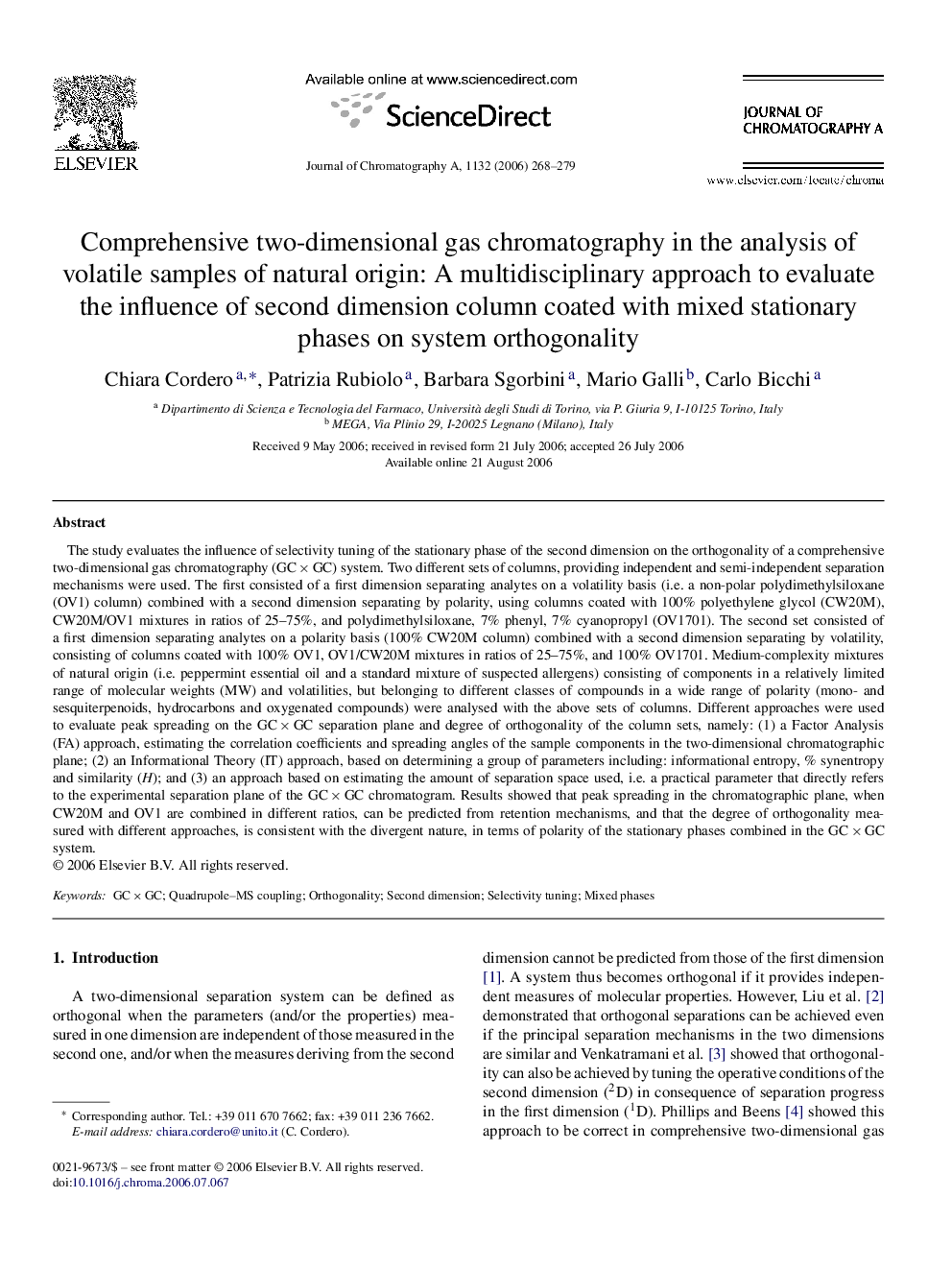| Article ID | Journal | Published Year | Pages | File Type |
|---|---|---|---|---|
| 1209600 | Journal of Chromatography A | 2006 | 12 Pages |
The study evaluates the influence of selectivity tuning of the stationary phase of the second dimension on the orthogonality of a comprehensive two-dimensional gas chromatography (GC × GC) system. Two different sets of columns, providing independent and semi-independent separation mechanisms were used. The first consisted of a first dimension separating analytes on a volatility basis (i.e. a non-polar polydimethylsiloxane (OV1) column) combined with a second dimension separating by polarity, using columns coated with 100% polyethylene glycol (CW20M), CW20M/OV1 mixtures in ratios of 25–75%, and polydimethylsiloxane, 7% phenyl, 7% cyanopropyl (OV1701). The second set consisted of a first dimension separating analytes on a polarity basis (100% CW20M column) combined with a second dimension separating by volatility, consisting of columns coated with 100% OV1, OV1/CW20M mixtures in ratios of 25–75%, and 100% OV1701. Medium-complexity mixtures of natural origin (i.e. peppermint essential oil and a standard mixture of suspected allergens) consisting of components in a relatively limited range of molecular weights (MW) and volatilities, but belonging to different classes of compounds in a wide range of polarity (mono- and sesquiterpenoids, hydrocarbons and oxygenated compounds) were analysed with the above sets of columns. Different approaches were used to evaluate peak spreading on the GC × GC separation plane and degree of orthogonality of the column sets, namely: (1) a Factor Analysis (FA) approach, estimating the correlation coefficients and spreading angles of the sample components in the two-dimensional chromatographic plane; (2) an Informational Theory (IT) approach, based on determining a group of parameters including: informational entropy, % synentropy and similarity (H); and (3) an approach based on estimating the amount of separation space used, i.e. a practical parameter that directly refers to the experimental separation plane of the GC × GC chromatogram. Results showed that peak spreading in the chromatographic plane, when CW20M and OV1 are combined in different ratios, can be predicted from retention mechanisms, and that the degree of orthogonality measured with different approaches, is consistent with the divergent nature, in terms of polarity of the stationary phases combined in the GC × GC system.
